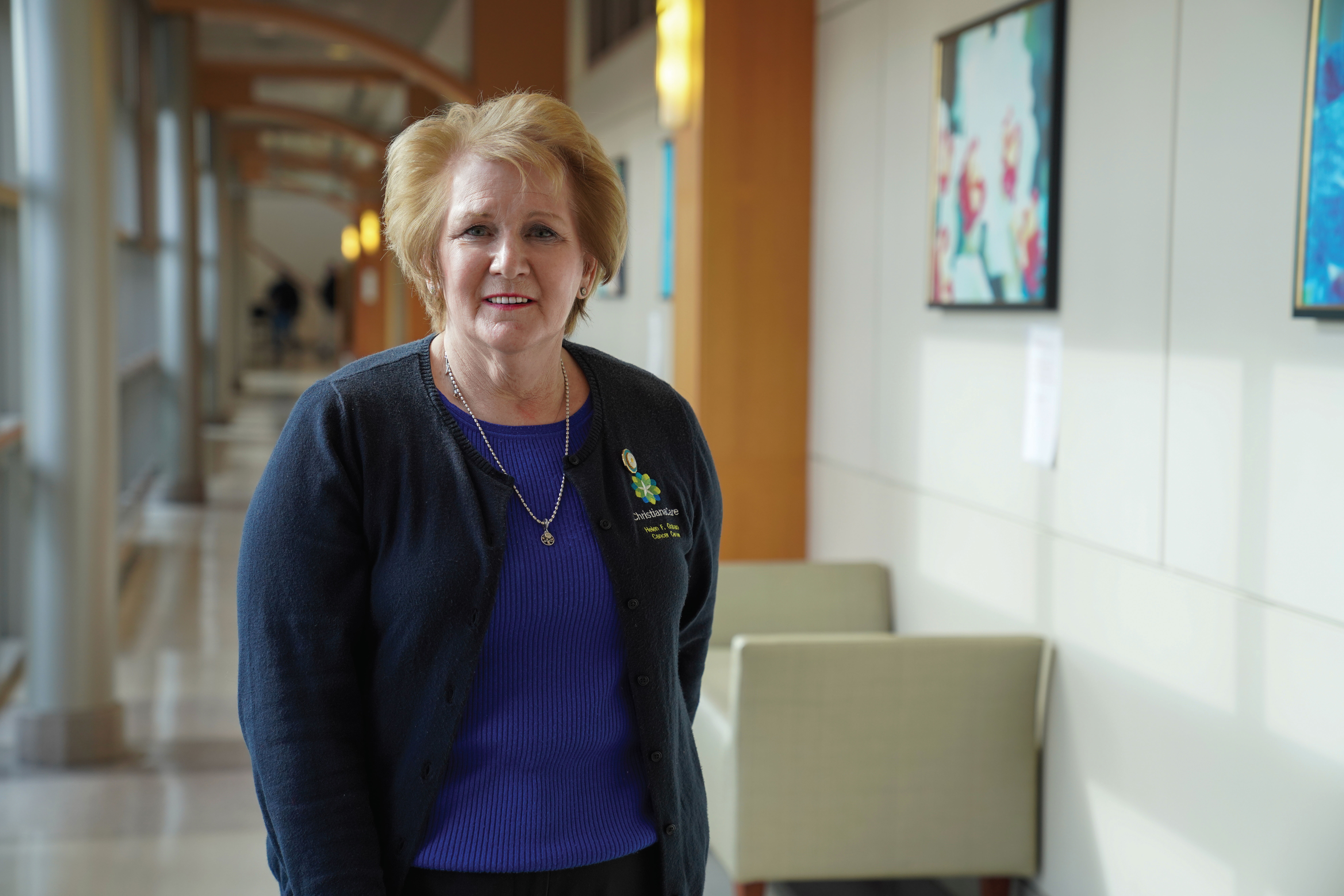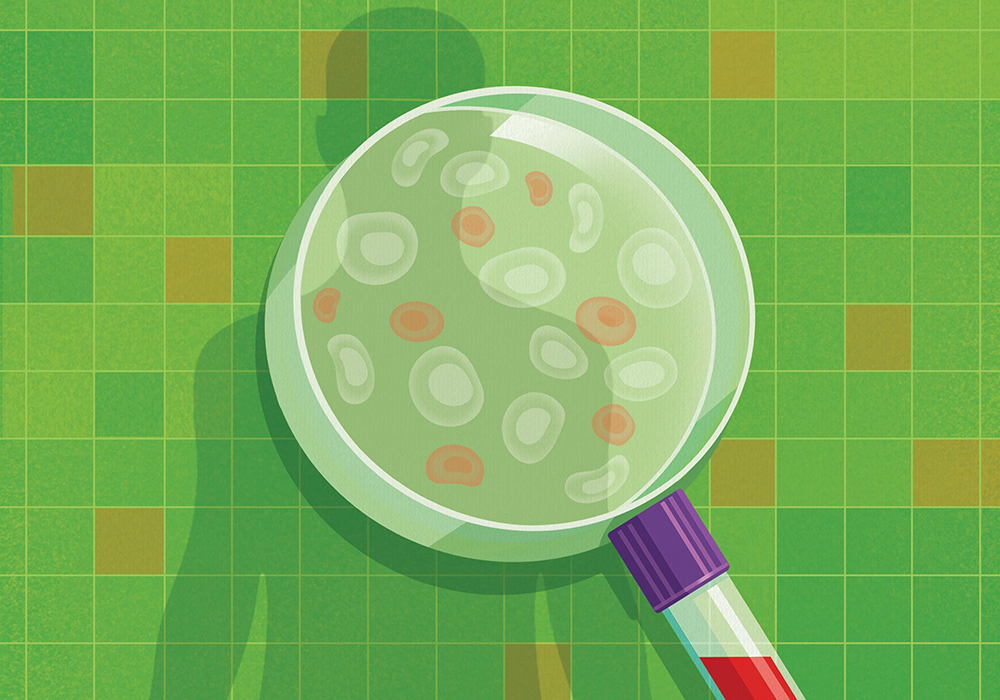Patient education is an essential aspect of cancer prevention. Nearly 1.9 million people in the United States will be diagnosed with cancer in 2021, and modifiable risk factors are responsible for approximately 35% of cancer-related deaths. However, less than half of Americans understand the major risk factors that contribute to the development of cancer.
Oncology nurses can help change those statistics by educating patients to maintain preventive measures such as healthy lifestyle behaviors and adhering to recommended cancer screenings.

“I have often heard patients say, ‘I never thought I would have cancer, no one in my family had it.’ It seems the public still believes cancer causes are one dimensional,” ONS member Clare Sullivan, BSN, MPH, OCN®, clinical program manager for patient education at Dana-Farber Cancer Institute in Boston, MA, and member of the Boston ONS Chapter, said. “Genetics has a very important role in some cancers, but as oncology nurses, we understand environmental factors, lifestyle choices, and the need to care for ourselves and respect what we put into our bodies. We have a responsibility to educate the patients we care for.”
ONS member Nora C. Katurakes, RN, MSN, OCN®, manager of the community health outreach and education program for ChristianaCare’s Helen F. Graham Cancer Center and Research Institute in Newark, DE, and member of the Delaware Diamond ONS Chapter, said that patients often reveal misconceptions about their cancer.

“Many patients with cancer believe that their diagnosis is God’s will and they have no control over it, or that you can’t prevent cancer; it is in the environment,” Katurakes said. “Many patients are unaware that health insurance doesn’t cover everything. They don’t realize there are different costs—hospital costs, outpatient costs, physician billing—and have a lack of knowledge about the varying degrees of risk or prevention methods to mitigate their risk.”
Cancer Screening Rates Are Declining
“Prevention saves lives. I know this, because it recently saved my life,” Sullivan said. “It is far too easy to put routine cancer prevention screenings aside, and the COVID-19 coronavirus presented another additional barrier.”
Screening appointments for breast, cervical, and colon cancers in March 2020 decreased 86%–94% compared to the previous three years. The total number of colonoscopies and biopsies performed dropped nearly 90% by mid-April 2020 compared to the same period in 2019. New colorectal cancer diagnoses were down more than 32%, and the number of colorectal cancer surgeries fell by 53% compared to the previous year.
“I often wonder what will be the outcome of the skipped colonoscopy or mammogram? What will the next four to eight years look like for oncology nurses? How will this affect the cancer incidence rates and the cancer survivor rates?” Sullivan said. “I believe it’s imperative that oncology nurses remind patients and caregivers that preventive care matters. As they finish treatment in any area, every nurse should have on their checklist a discussion about cancer prevention needs.”
National Cancer Institute Director Norman (Ned) E. Sharpless, MD, shared findings from early Cancer Intervention and Surveillance Network prediction models that support Sullivan’s theory, projecting an increase of 10,000 deaths from just breast and colon cancer alone in the next 10 years because of the decrease in screening rates (Cavallo, 2020).
“COVID-19 has distracted individuals from basic screening,” Katurakes said. “Most conversations we are having with our community stress that delay in personal care should be avoided.”
Help Patients Overcome Barriers to Preventive Behaviors
Katurakes said that several barriers may prevent patients from adhering to screening recommendations or practicing healthy behaviors:
- Poor health literacy and knowledge
- Lack of access or convenience
- Little free time
- Lack of family experience
- Competing personal issues
“A person’s understanding of health information and how it is explained to them by a provider or through an educational session may affect how they believe or actually adopt a prevention or screening behavior,” Katurakes said. “Social determinants of health, including not only personal behaviors but where they live or what family experiences they have like seeing a dentist or getting Pap tests, can influence adoption of prevention and screening."
HPV Vaccines Show That Cancer Prevention Works
“The adoption of the human papillomavirus (HPV) vaccination for girls and boys revolutionized cancer prevention,” Katurkaes said.
Cervical cancer rates have dropped more than 90% in women who've received the HPV vaccine, and men who’ve received it have reduced rates of penile cancers and HPV transmission to sexual partners.
The Centers for Disease Control and Prevention recommended the HPV vaccine for both men and women to prevent against cervical, penile, anal, and oropharynx cancers.
Children should receive the vaccine by age 11 or 12, starting as early as 9 years old.
Women aged 13–26 and men aged 13–21 should also obtain the vaccine if they were not vaccinated as children.
Individuals who are gay, bisexual, transgender, or immunocompromised and have not been previously vaccinated should receive routine HPV vaccines through age 26.
Community Education Is Critical
“Programs and education must be tied to the evidence. It is important for information to come from reliable resources and be tailored to the audience,” Katurakes said.
Katurakes developed a team of outreach coordinators and nurses to lead programs at venues like farmer’s markets, churches, and community events.
“We use innovative displays like prize wheels and combination screening (point-of-care testing for blood pressure, cholesterol, and sugar) and provide the public with written materials in preassembled bags with information about a topic or access to screening,” she said.
The team also created a train-the-trainer program that educates people in the community about triple-negative breast cancer with the goal of having them share the message with their friends and neighbors.
“Education should be delivered by those who are trusted in the community,” Katurakes said. “These are people who can share their stories and lead by example.”
Provide Validated Resources
“Many cancer care teams often tell patients to stay off the internet and not read content from online sources in an attempt to protect them from misinformation. I find that very unfortunate,” Sullivan said. “Many expert organizations post helpful materials for patients, families, and caregivers. I believe it’s okay to recognize the reliable sites and then monitor your patients’ content.”
Katurakes recommended that nurses form groups to review screening guidelines and identify current practices. She said that the U.S. Department of Health and Human Services’ Community Guide website (thecommunityguide.org) can help healthcare providers identify evidence-based resources.
“Learn what state programs support those who are not insured, and provide education at lunch-and-learn sessions or through newsletters that raise awareness of basic health information,” Katurakes said. “Nurses can help their colleagues understand the importance of basic screening guidelines and remind patients with cancer about prevention and screening.”
Both Sullivan and Katurakes said that oncology nurses have endless ways to educate the public about cancer screening and prevention.
“As oncology nurses, we know that all people learn differently. Meeting patients and caregivers where they are emotionally, with plain language and a familiar modality for learning, is critical,” Sullivan said. “We should evaluate virtual settings and ensure that they are as effective as traditional education for patients and caregivers.”
“We need to continue to provide education to our young people about measures that will affect them when they’re older,” Katurakes said. “As a nurse, I have tried to be healthy—not perfect, but mindful. I also have tried to learn from the community and others about how to engage, teach, and help.”






